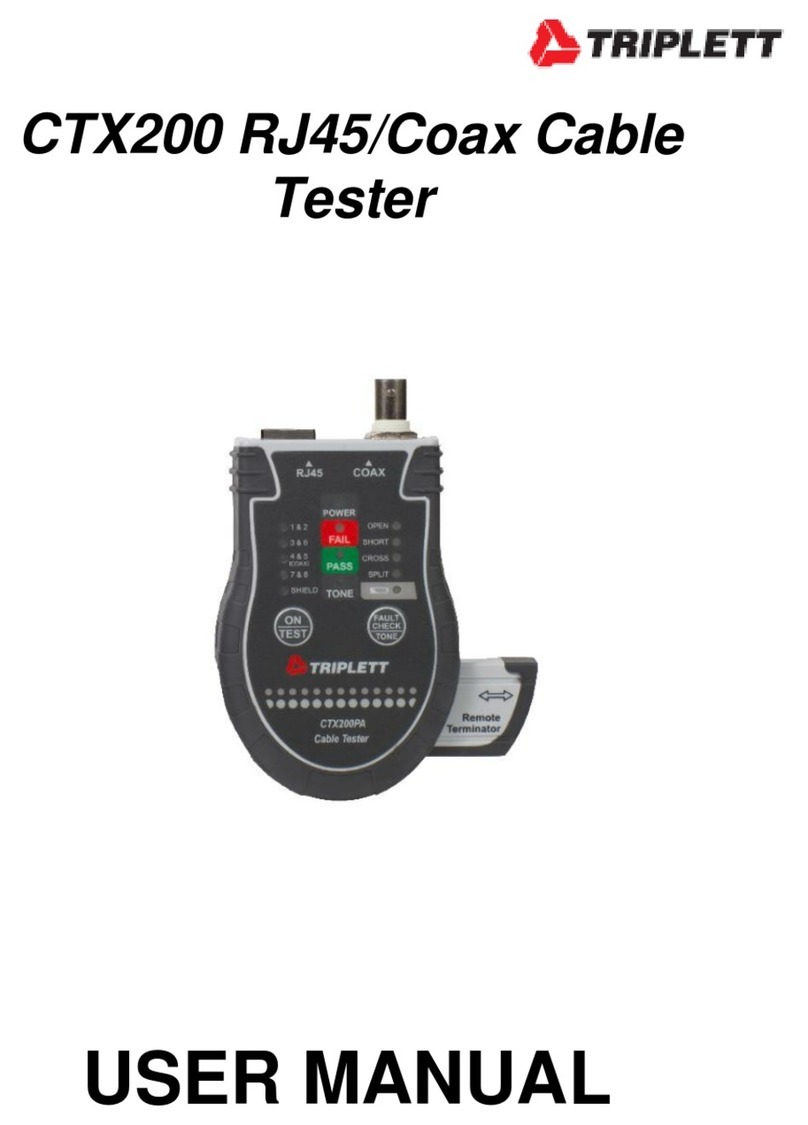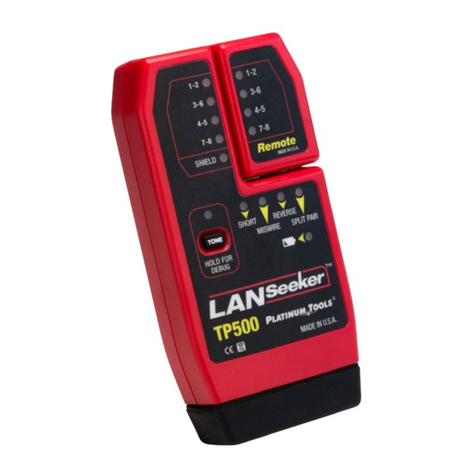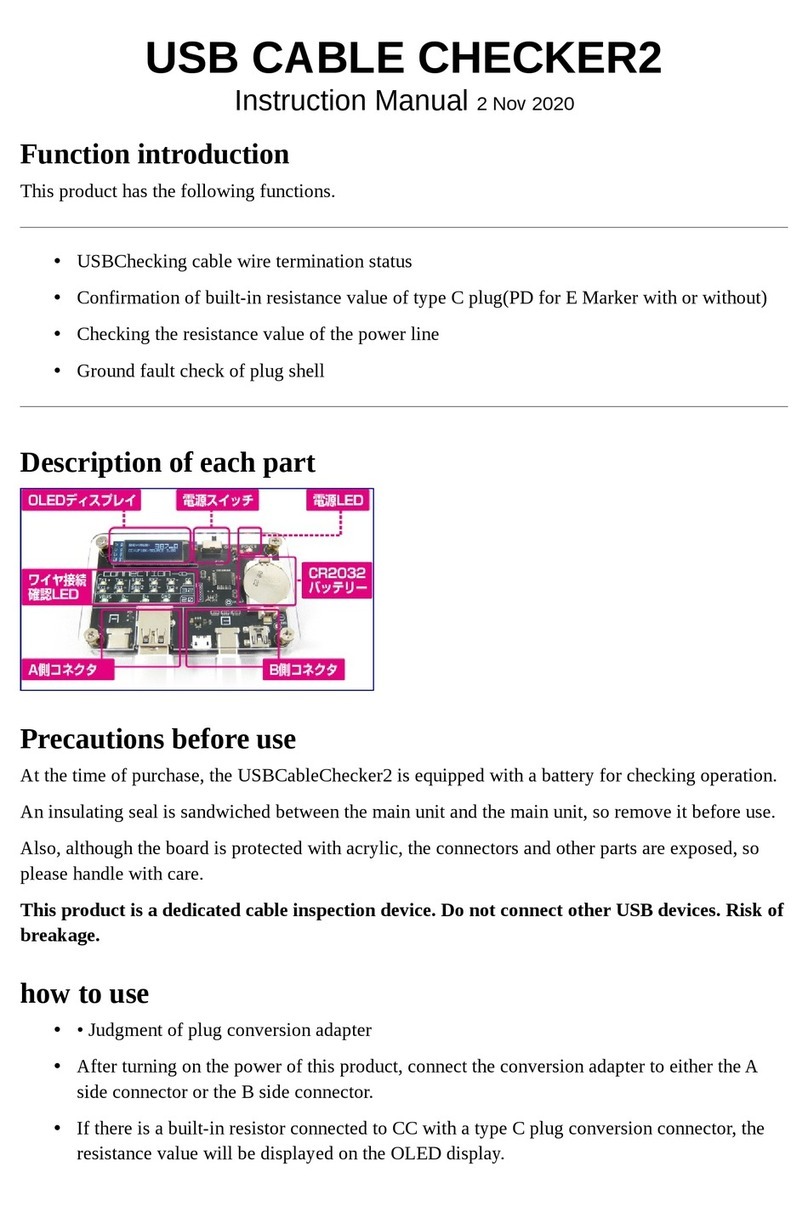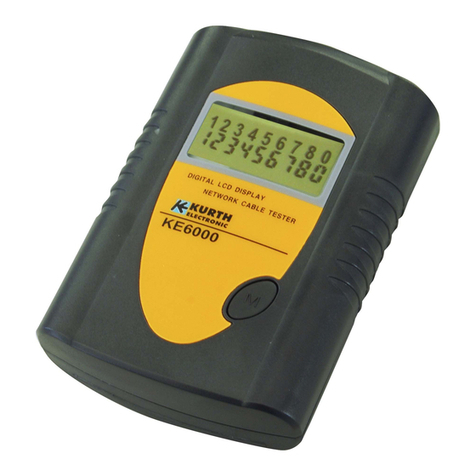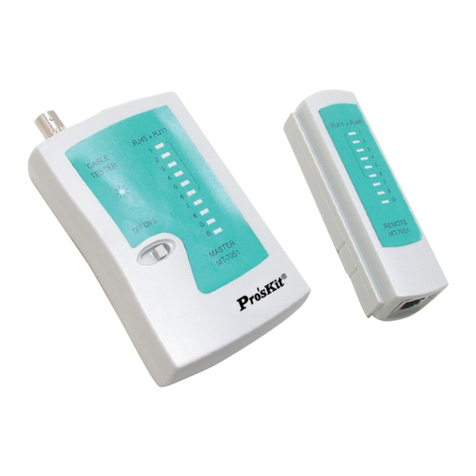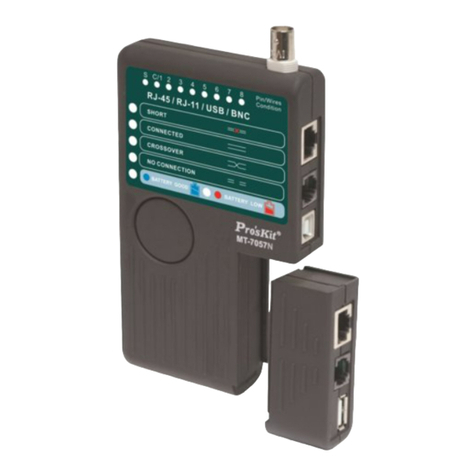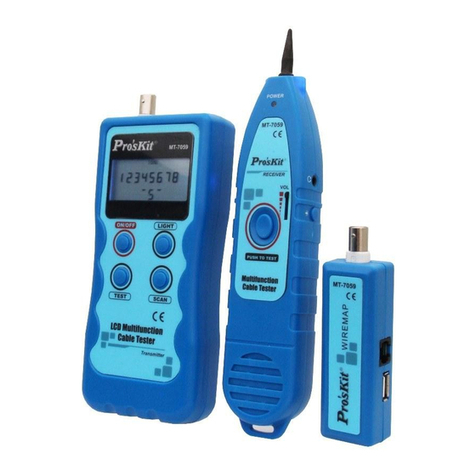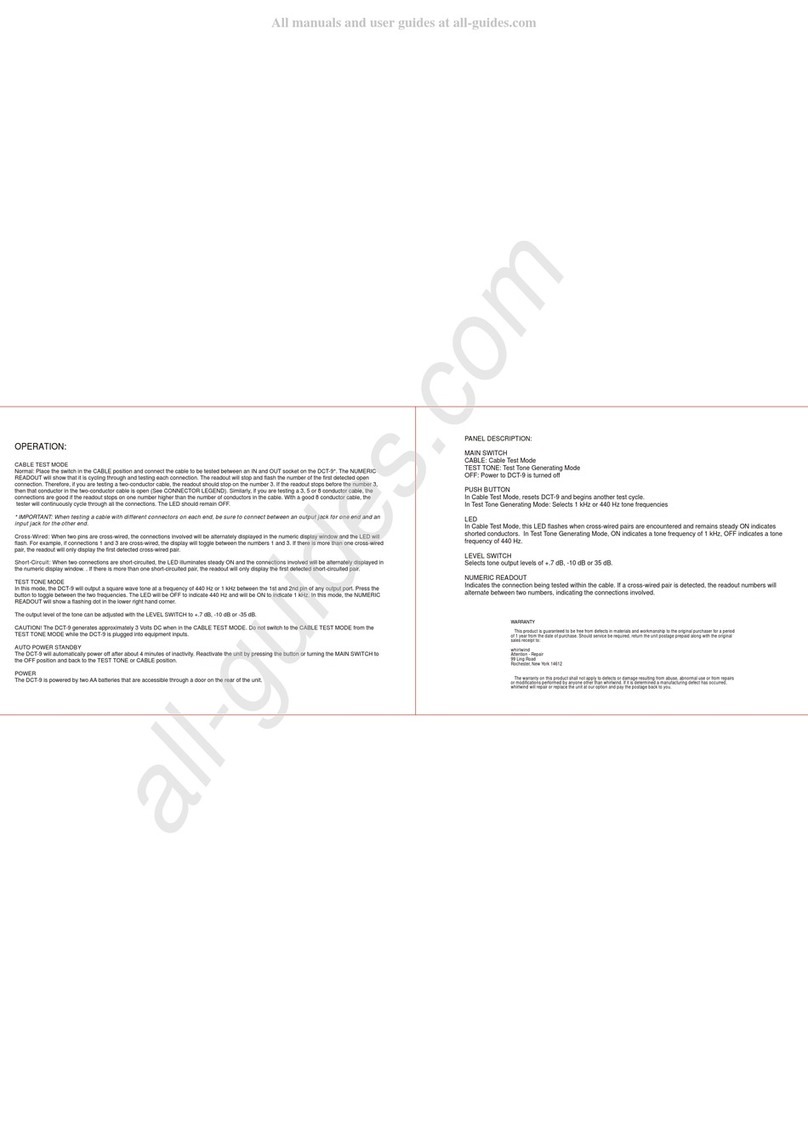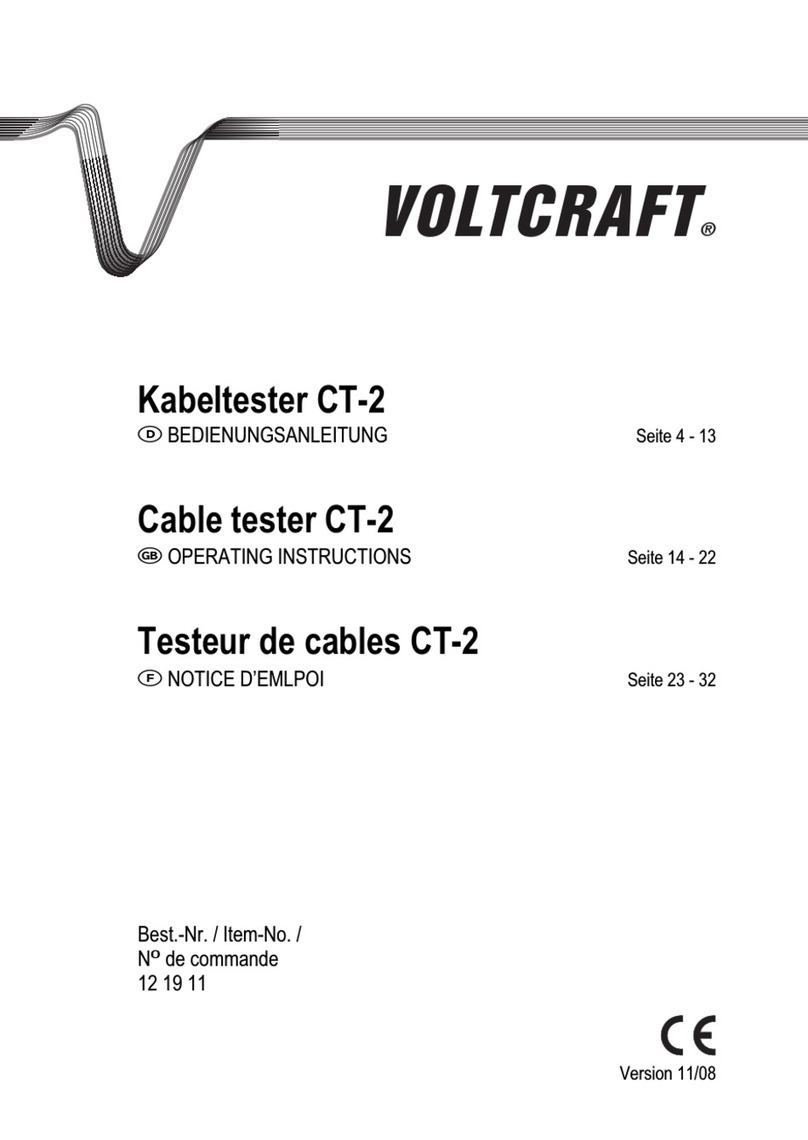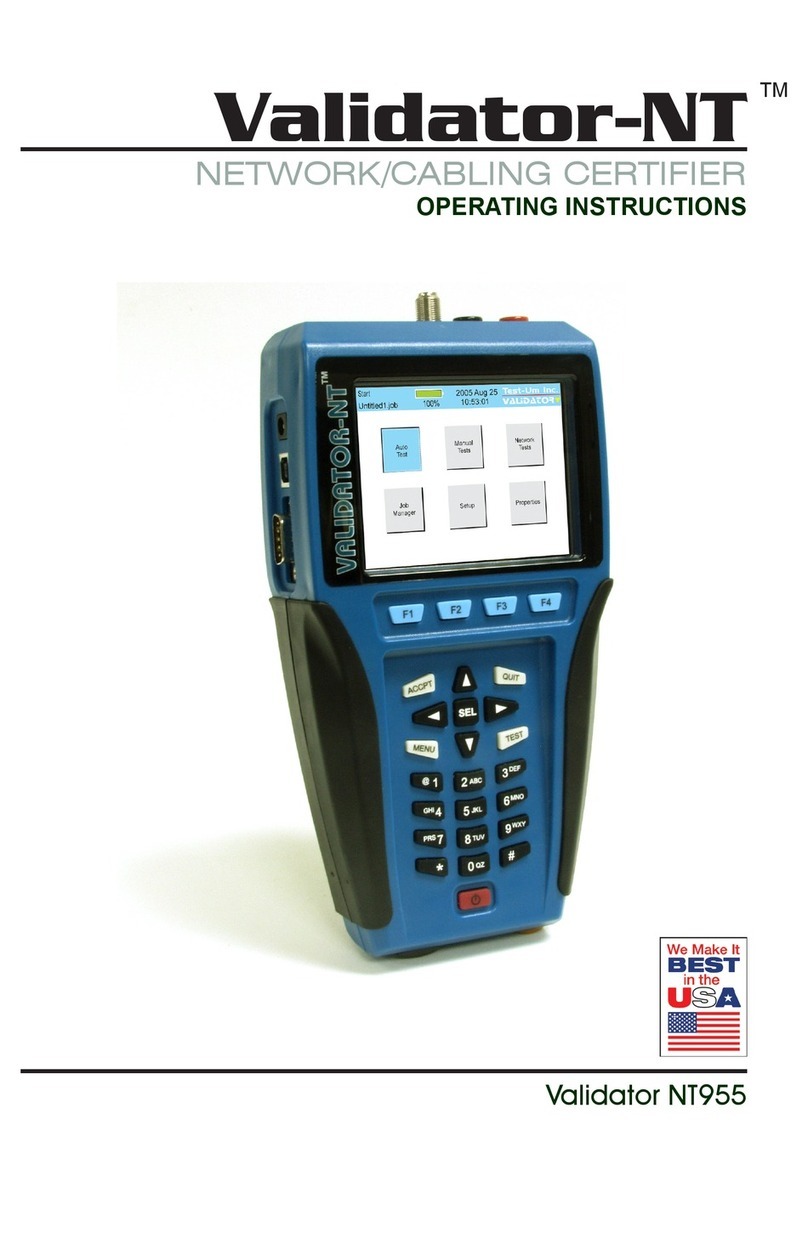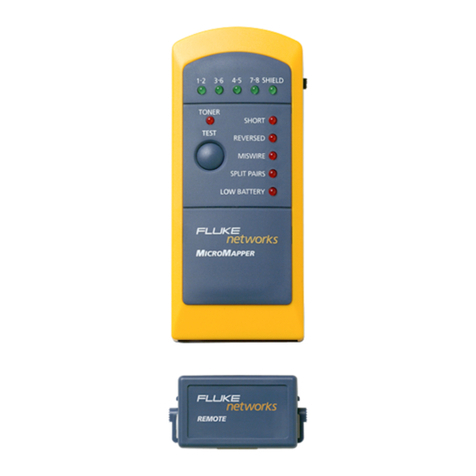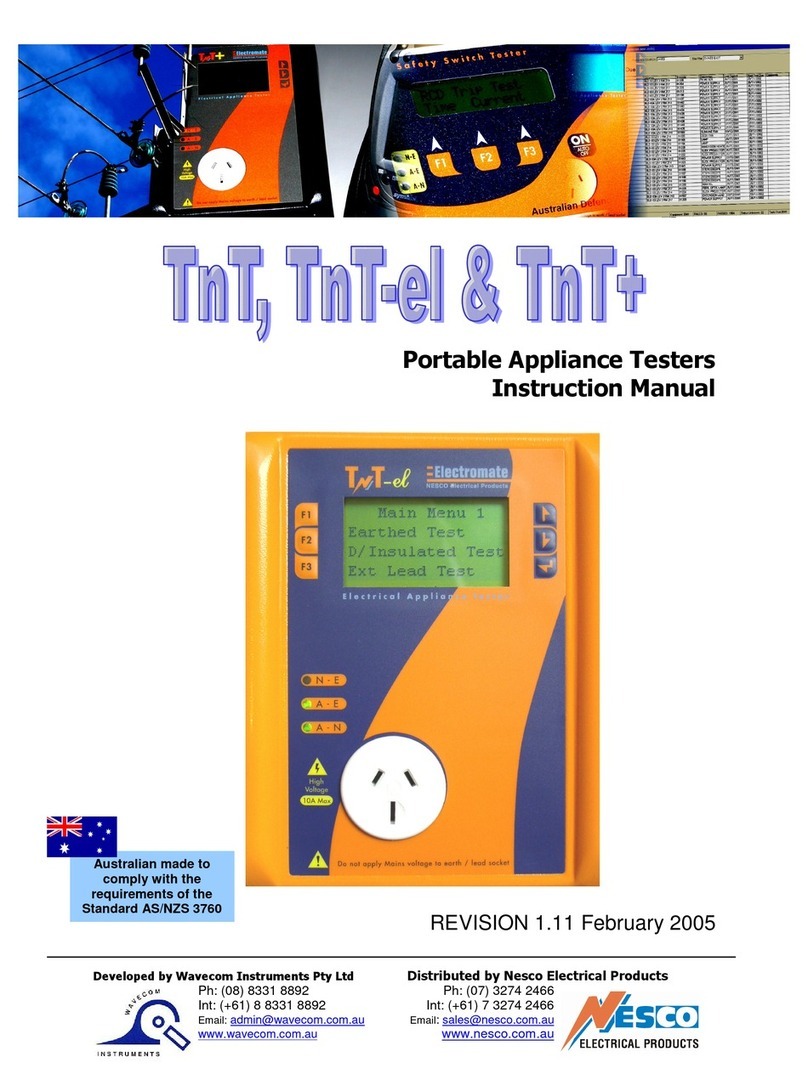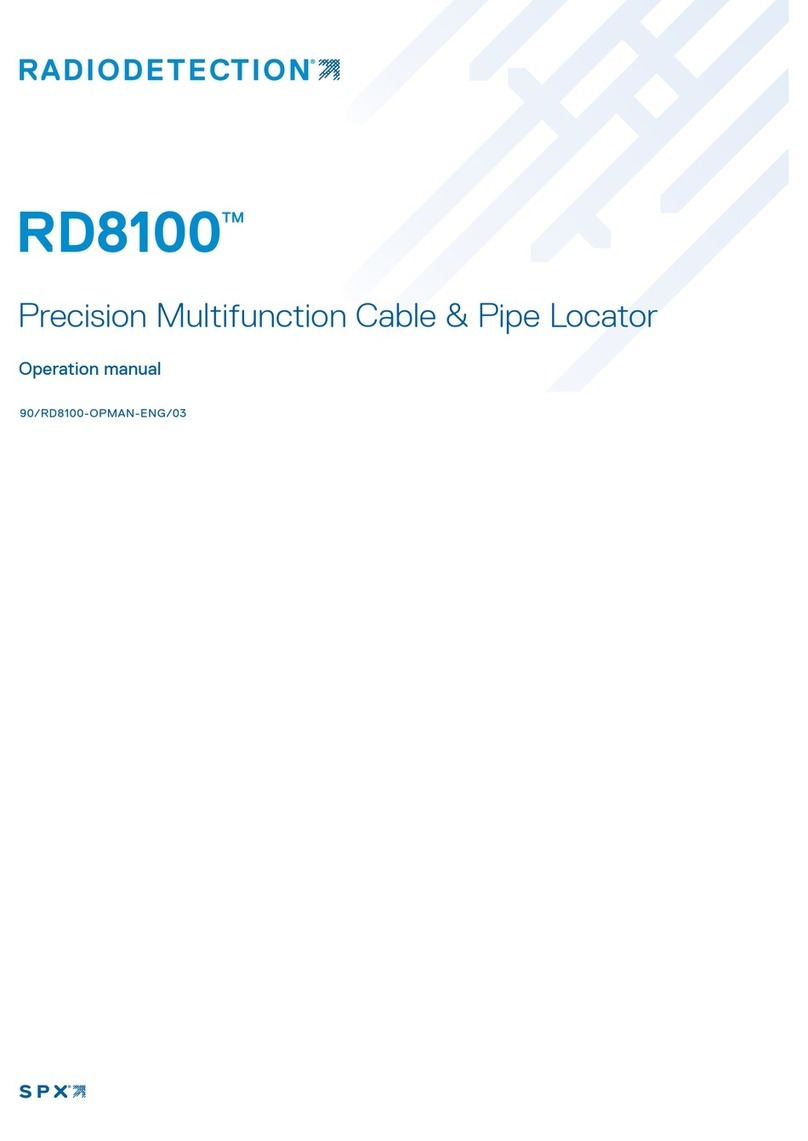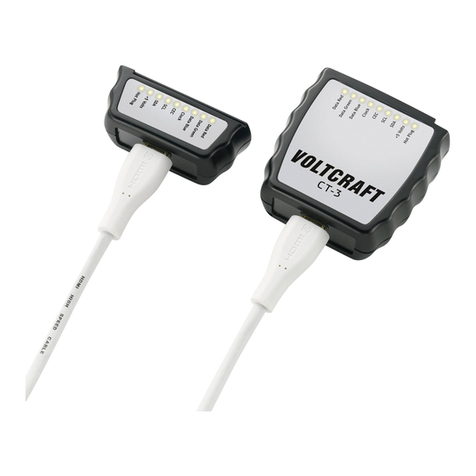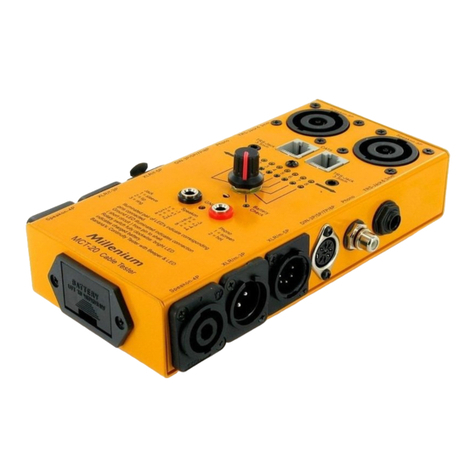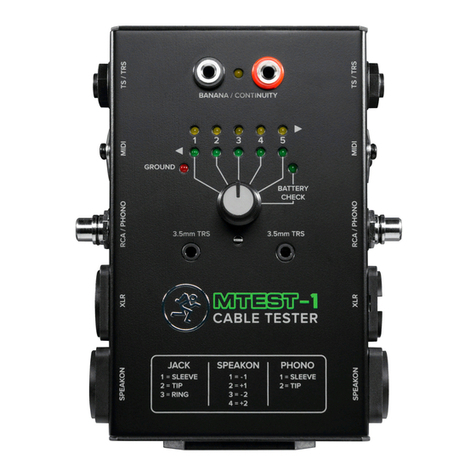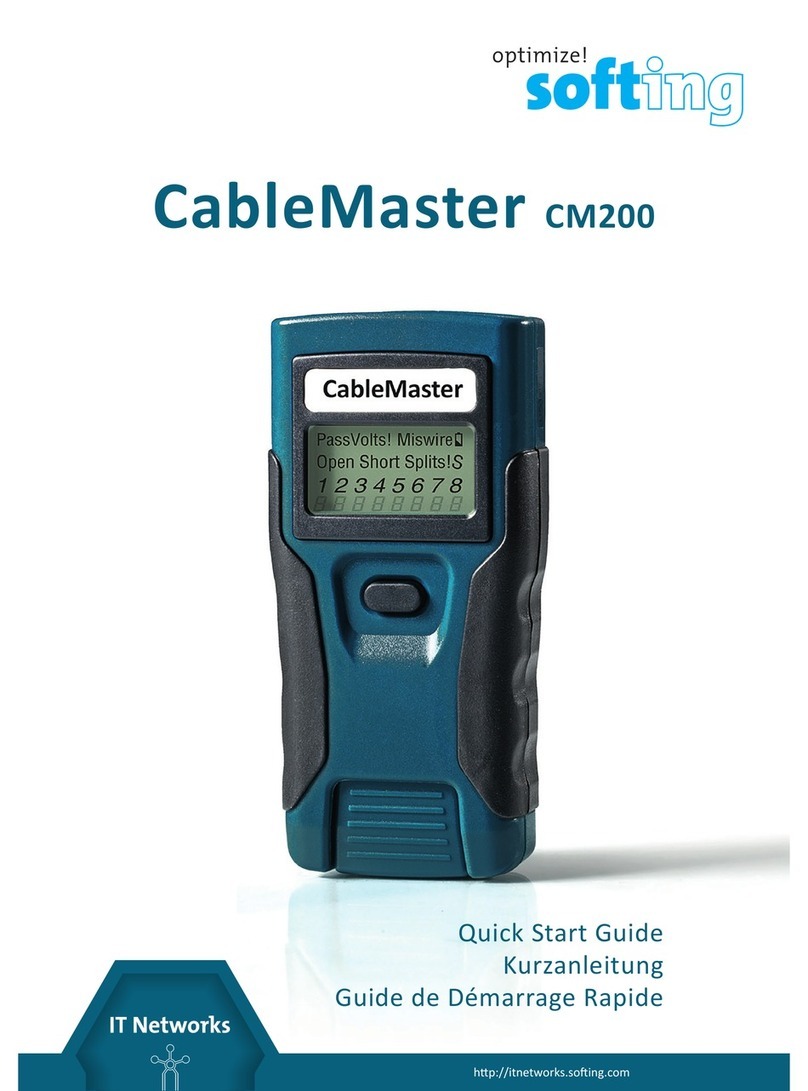
4
such as rain, snow, fog, or locations with
steam, explosive gases or dusts.
11. Do not use tester in condensing
atmospheres. That is, do not use tester in
conditions where ambient temperature and
humidity could cause condensation of water
inside of the tester.
12. Do not use this tester if it is wet, either from
13. exposure to the weather, or after cleaning
the
14. case of the tester.
15. Do not attempt immediate use of the tester
when bringing it from a cold environment to a
warm environment. Condensation of water,
inside and outside of the tester, may produce
dangerous conditions. Allow the tester to
warm to room temperature before using.
16. Do not modify this tester. Changing the
design may make the tester unsafe and may
result in injury to the user.
17. Do not use this tester if it has undergone
long-term storage user unfavorable
conditions.
18. Do not use the tester if it has been damaged
in transport.
19. Avoid usage near strong magnetic fields
(magnets, loudspeakers, transforms, motors,
coils, relays, contactors, electromagnets, etc.)
The tester may display readings that are in
error.
20. Avoid usage near strong electrostatic fields
